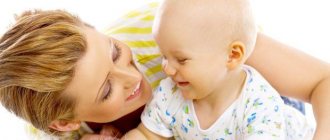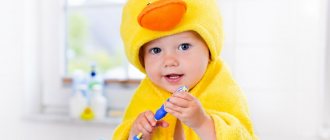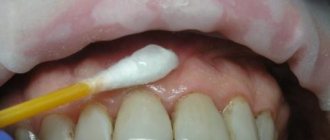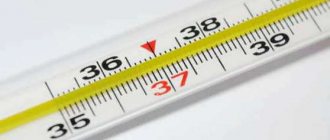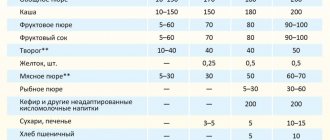How to help your child with medicine when teething
For some children, homemade recipes and other non-drug methods do not help. This is due to the different sensitivity and susceptibility of the body of small patients. All medications should be selected exclusively by a doctor. It is likely that the infant has a history of chronic and other diseases for which drug therapy is strictly contraindicated. Self-prescription of pharmaceutical products can lead to allergic reactions and other side effects, so it is better not to rely on reviews on the Internet and advice from other mothers. Let's look at how to help a child teething with the help of medications.
Kalgel
The combined gel has an anesthetic and anti-inflammatory effect. The active ingredient is lidocaine, that is, inflamed and swollen gums seem to be “frozen.” Sold exclusively with a doctor's prescription. It is necessary to observe the exact dosage and avoid excessive use. The effect lasts for a long time.
Kamistad
Produced in Germany. The principle is almost identical to the previous drug, but the composition contains harmless polidocanol and tincture of chamomile flowers. Herbal components help eliminate pain, itching, inflammation, swelling and redness. The composition is sweet, so the little patient will not spit it out and will be happy to open his mouth. It is often prescribed by doctors for diseases of the oral cavity.
Holisal
The gel-like substance contains choline salicylate and auxiliary components. Prescribed also for adults. Allowed for use over six months of age. It acts quickly and relieves a wide range of dental problems. This is one of the best remedies for pain relief when a child is teething badly. The disadvantage is the higher cost compared to analogues.
Dentinox
A paste based on lidocaine and chamomile extract disinfects treated surfaces of the oral cavity, relieves pain and swelling of soft tissues. Unpleasant sensations are eliminated in a short period of time, the baby sleeps soundly, does not cry for no reason, and happily eats mother's milk or an adapted formula from a bottle. Since the gel is applied externally, it is completely safe when used in moderation.
Eruption of molars
The eruption of molars in children is somewhat different. Already “adult” teeth do not cause such intense symptoms. This may be due to the fact that the child’s pain threshold has already increased significantly. Another advantage is that the permanent tooth erupts through the gum, which has not yet completely healed after the baby tooth has fallen out.
The process of replacing baby teeth with permanent ones occurs at the age of 5–7 years. This happens as follows. The rudiments of molars begin to form inside the gums and gradually “push” the milk teeth, the roots of which by this time are already resolving. When temporary crowns fall out, they are replaced with permanent ones.
The pattern of eruption of permanent teeth in children corresponds to the order of growth and loss of baby teeth. The first teeth to fall out are the central incisors, the lateral incisors, and then the molars. Possible deviation from the norm. The correspondence between the eruption of primary and permanent teeth is explained by the “life” of the roots of the first teeth. The bite changes completely only at 10–14 years of age. By this age, the child should have 28 teeth. The remaining 4 are eights (wisdom teeth) and they all grow individually.
Folk remedies
Medicines are effective for teething, but what should you give a child when teeth are cutting and you don’t want to use synthetic drugs? Home methods are auxiliary because they cannot always completely eliminate pain. However, for some children, these options are the most preferable and really help cope with pain. Doctors sometimes advise using:
- Compresses with chamomile. It is necessary to moisten a bandage or cotton pad in chamomile infusion and then apply it to the painful cheek. To relieve inflammation and swelling, dentists recommend giving several teaspoons of herbal tea.
- Honey. If the baby is not prone to allergic reactions, you can lubricate the inflamed mucous membranes with a honey substance. You should rub the substance in carefully, otherwise the baby will simply swallow it, and all manipulations will be useless.
- Soda solution. It is recommended to dissolve 1 tsp. soda in a glass of clean warm boiled water, dip a gauze cloth and wipe the gums. This product helps not only relieve pain, but also disinfect the surface.
Before using traditional methods, you must always consult a doctor, even if the herbal substances used are considered completely safe. Sign up for a consultation at the dental office, our specialists will recommend effective formulations that will not harm the little patient.
What assistance should be provided during teething?
A dentist can advise you on how to provide correct and effective assistance when teething in children. If there are signs of the appearance of the first teeth, it is recommended to show the baby to a specialist.
Simple Methods
Popular methods for relieving itching and pain in young children that parents should use.
- Gum massage. Hands are washed well. After this, the parent makes pressing and rubbing movements with his finger at the site of gum swelling. You can replace finger massage with a silicone brush, which is pre-disinfected.
- Cooling. Place the teether in the freezer for 10–15 minutes and then give it to the baby. You can also rub the toy along your child’s gums yourself. Cold constricts blood vessels, eliminates sensitivity, thereby reducing pain.
Both methods should be approached with caution to avoid injury or hypothermia of the gums.
Pharmacy products
To eliminate itching and pain, you can purchase a special product at the pharmacy. These can be powders for oral administration, or local agents that have an anesthetic effect.
Local pharmacies:
- Kalgel;
- Kamistad;
- Holisal;
- and others.
The use of any product is permissible only after consultation with a dentist and after a preliminary allergy test.
To reduce the temperature, it is recommended to give the child Nurofen. It is also possible to apply the syrup locally to the swollen area of the gum.
How to calm your baby
Many young mothers worry about what to do and how to alleviate the condition when the child is teething, because he screams loudly and cannot sleep or eat normally. The best way to help a newborn is to breastfeed frequently. During the sucking process, the baby calms down, feeling maternal protection and love.
Parents may notice that regurgitation has become a common occurrence at this time. This feature is associated with abundant salivation and is quite natural. It is important not to confuse the periodic passage of air and food with vomiting, which is dangerous to life and health due to the high risk of dehydration.
What is diarrhea
Diarrhea in a child occurs due to the introduction of a new food product.
On what principle does the protective mechanism of diarrhea work? The mucous substance produced by intestinal cells has a protective function for the body against pathogenic bacteria and viruses.
When these microorganisms enter the internal environment of the intestine, they begin to attack the intestinal walls, destroying the cells that produce protective mucus.
As a result, the human body cannot cope with the production of the required amount of mucus, and some parts of the intestine remain unprotected.
Toxins released by a virus or bacteria enter such “weakened” areas of the intestine and affect it. The human body, trying to protect itself, begins to release large amounts of water to flush out toxic substances.
Dental care
The oral cavity needs high-quality hygiene, even if only one incisor has erupted. At first, it is enough to wipe the crowns and gums with a cotton pad or a piece of bandage soaked in clean water (necessarily boiled). You can do this once a day for up to a year.
In one-year-old children, plaque formed from food is removed with a special silicone brush, which is placed on the finger of mom or dad. At 1.5 years old, the baby will be able to clean himself. Two-year-olds pick up the usual children's brushes with soft bristles, suitable for a certain age category.
One of the most important skills is the ability to rinse your mouth. At the age of two, a little person can already learn to do this on his own. Don’t forget about preventive visits to the pediatric dentist. The first visit is indicated at 12-14 months.
Diarrhea in a baby - parental behavior tactics
12.04.2021
Diarrhea in a baby can drive parents crazy - bowel movements are disrupted, the child is worried, sleeps poorly or a lot, does not eat, cries. This may increase the temperature. When the first symptoms appear, it is necessary to understand the cause, take the first measures and follow the basic recommendations.
Causes of diarrhea
Diarrhea in infants refers to a change in stool consistency. It becomes watery, with mucus and undigested food particles, the number of bowel .
Causes of this condition:
- viral or bacterial intestinal infections;
- improper nutrition of the baby or mother if she is breastfeeding ;
- food intolerance to lactose, gluten and other elements;
- surgical pathologies;
- changing the formula or abrupt transition to artificial feeding with breastfeeding;
- taking certain medications, such as antibiotics.
Normally, diarrhea is not observed teething . If the condition occurs, most likely due to a weakened immune system , a bacterial or viral intestinal infection has occurred. The reason for this is that to facilitate teething , babies often put toys and objects in their mouths that may not be processed or washed.
Doctors call dysbacteriosis a common cause of diarrhea . Many experts refute this diagnosis.
What should mom do?
diarrhea occurs in a child of the first year of life, you should consult a doctor . Assigned groups for this symptom:
- sorbents;
- antibacterial drugs;
- medications to normalize intestinal ;
- antipyretics for high temperatures;
- antiviral agents.
Sorbents bind allergens , toxins, bacteria and their waste products, and other factors that provoke diarrhea and remove them from the child’s body. As a result, nausea , vomiting, and diarrhea .
If the cause is determined to be a bacterial intestinal infection and the causative agent is identified, antibacterial drugs may be recommended by the pediatrician . It is unacceptable to take them on your own.
For a quick recovery and elimination of imbalances in the intestinal , probiotics and prebiotics are indicated. These drugs are taken in a course and after the symptoms disappear for 10 days. When purchasing medications, you must pay attention to the storage conditions.
If diarrhea , antiviral drugs in the form of suppositories can be used.
Recommendations
A dangerous consequence of diarrhea in infants is dehydration. To prevent it, you need to give your baby water more often. If this is not possible with a cup or bottle, you can use a teaspoon or a syringe without a needle. If you have severe symptoms of dehydration, call an ambulance.
If your baby is breastfed, put him to your breast . This helps satiate the baby, replenish lost fluids and calm the baby. This is especially important in cases where it is not possible to drink with clean water.
Another recommendation concerns the child's nutrition. vegetables, dairy products, fruits and juices should be removed during diarrhea
For several days, you need to observe the baby's skin - dryness, the appearance of a rash, pallor and feces - the presence of streaks of blood , foam, mucus, color changes.
When do you need to see a doctor?
a doctor diarrhea occurs in a child under one year of age . Immediate attention is required in cases where there are streaks of blood and mucus in the stool, the baby has a high fever and is vomiting.
Self-medication of such a symptom in children of the first life is contraindicated. There is a high risk of dehydration and complications.
Signs of dehydration:
- dry skin, mucous membranes, tongue;
- retraction of the fontanel;
- dry mouth , crying without tears;
- weight loss due to decreased fluid in stool and vomit;
- decreased urination , urine becomes darker;
- capriciousness, lethargy of the child.
diarrhea in an infant requires qualified medical care - the pediatrician, together with the mother, will determine the possible cause, prescribe treatment and select the dosage of medications. During therapy, it is extremely important to give more liquid or put the baby to the breast , monitor the amount of urine , feces, and skin excreted.
Published in Gastroentorology Premium Clinic
How to protect a baby from damage
Magic conspiracy No. 1
The spell against the evil eye must be done at dawn. To protect the baby from the evil eye, you should take 3 small gray stones, water and 3 spoons.
Then pour some water into the plate so that it flows by spoonfuls. You need to wash your baby with this water: wet the chest, crown, and then give him a sip to drink. After the procedure, go outside, pour out the remaining water and say 3 times:
“It came from the forest, go there, it came with the wind, it came to the wind and go away, it came from the people, it came to the people and go away.”
Magic plot No. 2
While bathing in the bathroom say:
“Grandmother Solomonida hovered, washed, and spoke conspiracies - from one they lived into another, into a single vein. So that no lessons, no supervision, and no slander will bother you. It didn’t take its own thought, and it didn’t take its own – not the lingual and not the ear, not the spot and not the heel, not the plantar and not the infraplantar. Amen".
Conspiracies from fear
Magic conspiracy No. 1
Say words over a sleeping child at any time of the day.
“Lord Jesus Christ, Son of God, have mercy on us. Just as the damp earth does not shake, does not get scared, does not turn back, so our baby (name) will not be scared and will never shake off. Amen".
Magic plot No. 2
To say in the evening over the baby's crib:
“Across wide fields, and across wide valleys, across green meadows, and along golden sands, along fast rivers, the servant of God (name) walked.
How fast rivers overflow, how golden sands flow, how water rolls off green grass,
Spells for tummy pain in a baby
Magic conspiracy No. 1
The ritual is performed any time the baby is bothered by abdominal pain. The person speaking crosses the baby’s tummy 3 times, then puts his palm on it and says the following words:
“I baptize God’s servant (name) with the cross, I want to relieve the pain in my tummy. Go to the little field, to your pure will, and don’t touch or disturb the baby (name). Forever and ever. Amen".
After the conspiracy, you again need to cross your tummy 3 times.
A spell that your mother or grandmother reads will definitely help
Magic plot No. 2
This plot, like the previous one, is done when a baby has a tummy ache. The speaker must take the icon of the Most Holy Theotokos, cross the child with it 3 times, then pronounce the spell words, applying the icon to the sore stomach:
“Most Holy Mary, mother of Jesus Christ, our God, you gave birth to your son, rocked him in a cradle, protected him from all pain. Place your hand on the tummy of God's baby servant (name) so that the pain disappears, goes away forever. Forever and ever. Amen".
Magic plot No. 3
The person speaking the spell needs to cross the child’s sore tummy 3 times, then bend over to him and say the spell words directly into the stomach and at the same time bite him with his lips. After the words have been spoken, you need to step back and cross yourself 3 times again:
“I bow to the sick belly of the servant of God’s child (name), I touch its pain, I bite it with strong teeth and spit over my left shoulder. There was severe pain - and there was none at all. Key, lock, tongue. Amen".
Prayers for babies' first teeth
The prayer should be read after reading the “Our Father.” The best address here would be to Saint Antipus.
Prayer to Saint Antipas:
“Oh, glorious holy martyr Antipos and quick helper to Christians in illness! I believe with all my soul and thoughts that the Lord has given you the gift of healing the sick and strengthening the weakened, for this sake I come running to you, as the blessed physician of illnesses, as the weak (or: weak) and kiss your venerable image with reverence (or: kissing) , I pray: by your intercession from the Heavenly King, ask me, who is sick (or: sick), for healing from the dental disease that depresses me: even though you are unworthy (or: unworthy) of seven to you, my most gracious father and ever-present intercessor: but you, being an imitator of God’s love for mankind, make me worthy (or: worthy) of your intercession through my conversion from evil deeds to a good life; heal the ulcers and scabs of my soul and body with the grace abundantly given to you, grant me health and salvation and good haste in everything, so that, having lived a quiet and silent life (or: having lived) in all piety and purity, I will be worthy to glorify the All-Holy Name with all the saints Father and Son and Holy Spirit, now and ever and unto ages of ages. Amen".
How to avoid diseases
Magic conspiracy No. 1
Magic words must be spoken over the child after he is born:
“I will get up, blessing myself, leave the house, crossing myself - I will go from the first doors to the second, from one gate to another, I will go out into an open field and go far, far to the sea-ocean. In the ocean-sea there is a white cast stone, and on it there is no alder, no blood, no tumor. So my child (name) would not have any pain, no pain, neither in the joints, nor in the veins, nor in the bones, nor in the head, nor in the brain, nor in the hot blood. Amen".
Magic plot No. 2
As in the previous plot, these words must be pronounced immediately after the birth of the baby.
“33 crows are flying, flying, carrying, carrying 33 stones. The crows sat on a hill, on a hill, under a fir tree, under a leaf, under a hot stove, under a steam bath. They took and removed any illness from the servant of God (child's name). Fly crows into an open field, go down into the blue sea, like the key to the bottom.”
Techniques
Massage the gums with your fingers (in the evening) or with a soft toothbrush (in the morning).
- Self-massage with fingers is performed with washed hands after hygienic brushing of teeth in the following sequence:
- Using light stroking movements, the pads of the index fingers of both hands move along the gum from the front teeth to the distant wisdom teeth. Repeat on each jaw 5–7 times.
- Rub the gums in a circular motion, moving along the gum from one wisdom tooth to another, gradually increasing the pressure.
- Wrap your fingers around the gum on both sides and squeeze near each tooth for 6–7 seconds, moving from the center to the far teeth.
- Complete the massage with soft strokes.
- There are several techniques for massaging your gums using a soft toothbrush:
- According to Charters. The brush is placed at the base of the teeth, massaging the enamel surface with vibrational movements up and down, capturing the edge of the gum. At the beginning of the procedure, the affected tissues are not affected.
- According to Shtilman. The brush is positioned at an angle of 45° with the bristles down, and carefully moved along the interdental spaces. During massage, not only cleaning occurs, but also increased blood flow.
- According to Bell. The brush is moved, grabbing the edge of the gum, in one direction - from the base of the teeth to the cutting edges. With slow movements, possible suppuration from the mucous membranes comes out.
- According to Fones. With the jaws closed, place the brush on the teeth at an angle of 90°. They make circular spiral movements along both rows of teeth, capturing the edge of the gums. When opening the mouth, repeat on the distal (back) side of the teeth.
- According to Hirschfeld. Pass the bristles from the neck of the teeth to the edge, capturing the edge of the gum. The direction of movement on the teeth of the lower jaw is from bottom to top, on the teeth of the upper jaw – from top to bottom.
Features of massage for periodontal disease and periodontitis
Massage for periodontal disease and periodontitis is carried out after sanitation of the oral cavity, taking into account the following features:
– gentle types of self-massage are performed with a toothbrush (according to Charters, Shtilman);
– finger massaging begins in healthy areas, gradually moving to the sick;
– after the procedure, the mouth is rinsed with a decoction of recommended herbs or a solution of tea tree oil (7-10 drops per glass of water).
To enhance the effect of the massage, applications are made - a medicinal product is applied to a cotton swab and held on the gum for 15 minutes. You can use fir oil, honey with added salt, or a mixture of 1 teaspoon of raw grated honey with the addition of 10 drops of vegetable oil.
Treatment with applications is carried out for 14 days, followed by a break.
You may also be interested in
CHILDHOOD
Finger wipes from 0 to 3 years ASEPTA BABY
For gentle oral hygiene of babies and massage of gums during the eruption of the first teeth
More about the product
CHILDHOOD
Children's gel toothpaste from 0 to 3 years ASEPTA BABY
Designed for gentle care of baby's gums and baby teeth
More about the product
Dental wet wipes-fingertips from 0 to 3 years ASEPTA BABY will be excellent helpers when massaging the gums. This product with xylitol, calcium pantothenate, as well as chamomile, witch hazel and green tea extract prevents the development of caries and inflammatory processes in the oral cavity and helps maintain its acid-base balance. The corrugated surface of the napkins is designed to lightly massage the gums and reduce discomfort during teething.
